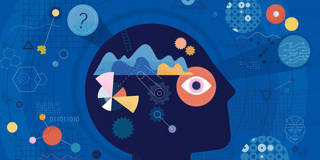OnPoint Subscriber Exclusive
Longer Reads provide in-depth analysis of the ideas and forces shaping politics, economics, international affairs, and more.

In AI We Trust?
Despite humanity’s efforts to tame it, uncertainty remains an unavoidable part of daily life. While many place their hopes in artificial intelligence, two new books suggest that instead of expecting technology to bring order to chaos, we may have to resign ourselves to navigating an increasingly uncertain world.
CAMBRIDGE – “Ah,” the English poet George Meredith lamented more than 150 years ago, “what a dusty answer gets the soul when hot for certainties in this our life!” It’s a sentiment that lies at the heart of two recent books that offer unique insights into the existential challenge of living in an age of heightened uncertainty.